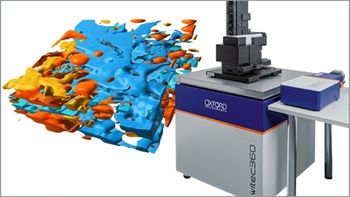
SERS Tested for Early Diagnosis of Pancytopenia-Related Diseases
Chinese scientists recently tested the potential of serum surface-enhanced Raman spectroscopy (SERS) for early differential diagnosis of pancytopenia-related diseases.
In a recent study led by scientists from Northeastern University in Liaoning, China, serum surface-enhanced Raman spectroscopy (SERS) was used to test potential for the early differential diagnosis of pancytopenia-related diseases. Their findings were later published in Spectrochimica Acta Part A: Molecular and Biomolecular Spectroscopy (1).
Pancytopenia is a condition where patients have fewer red, white, and platelet cells. According to two consecutive peripheral blood tests, the condition is usually characterized by hemoglobin (Hb) < 100 g/L, white blood cell (WBC) < 4.0 × 109/L and platelet (PLT) < 100 × 109/L. It Pancytopenia can be caused by medicine side effects, environmental toxins, chemotherapy, and autoimmune disorders (2). Among patients with pancytopenia, only a small amount can recover spontaneously without specific treatment. This phenomenon is known as spontaneous remission of pancytopenia (SRP), which is mostly due to drug allergy, virus or bacterial infection, causing abnormal hematopoietic function of the bone marrow and further leading to pancytopenia. Once these pathogenic factors are eliminated, SRP can occur.
Additionally, pancytopenia patients are usually later diagnosed with either aplastic anemia (AA) or myelodysplastic syndrome (MDS), the latter of which can potentially transform into leukemia. In this study, the scientists used a serum surface-enhanced Raman spectroscopy (SERS) method to explore early differential diagnosis of AA, MDS, and SRP. SERS is a technique that enhances Raman scattering of molecules that are supported by nanostructured materials (3). The technique has also been used for other medical purposes, such as testing for early-stage melanoma skin cancer (4).
Read More:
Serum samples were collected from patients with unconfirmed diagnosis of pancytopenia related diseases at their initial consultation, with a confirmed diagnosis could be made at a follow-up consultation. Serum SERS measurements showed significant differences in certain amino acids, protein substances, and nucleic acids among patients with different early-stage pancytopenia-related diseases. These are expected to be potential bio-markers for early differential diagnosis. A partial least square–linear discriminant analysis (PLS–LDA)-based diagnostic model was used to diagnose pancytopenia-related diseases in early stages with high diagnostic accuracy, sensitivity, and specificity. These results show that the proposed serum SERS method shows potential for the early differential diagnosis of pancytopenia related diseases, even at earlier times than diagnoses by conventional clinical examinations. As such, this system could be clinically vital for guiding timely and rational intervention to improve patient survival rates.
SERS has also been used for other medical purposes, such as
References
(1) Chen, Z.; Li, Y.; Zhu, R.; Zhou, Z.; Yan, Z.; Chen, S.; Zhang, G. Early Differential Diagnosis of Pancytopenia Related Diseases Based on Serum Surface-Enhanced Raman Spectroscopy. Spectrochim. Acta Part A: Mol. Biomol. Spectrosc. 2024, 316, 124335. DOI:
(2) Pancytopenia. St. Jude Children's Research Hospital 2024.
(3) Han, X. X.; Rodriguez, R. S.; Haynes, C. L.; et al. Surface-Enhanced Raman Spectroscopy. Nat. Rev. Methods Primers 2021, 1, 87. DOI:
(4) Acevedo, A. SERS-Based Skin Cancer Detection Method Tested. MJH Life Sciences 2024.
Newsletter
Get essential updates on the latest spectroscopy technologies, regulatory standards, and best practices—subscribe today to Spectroscopy.





